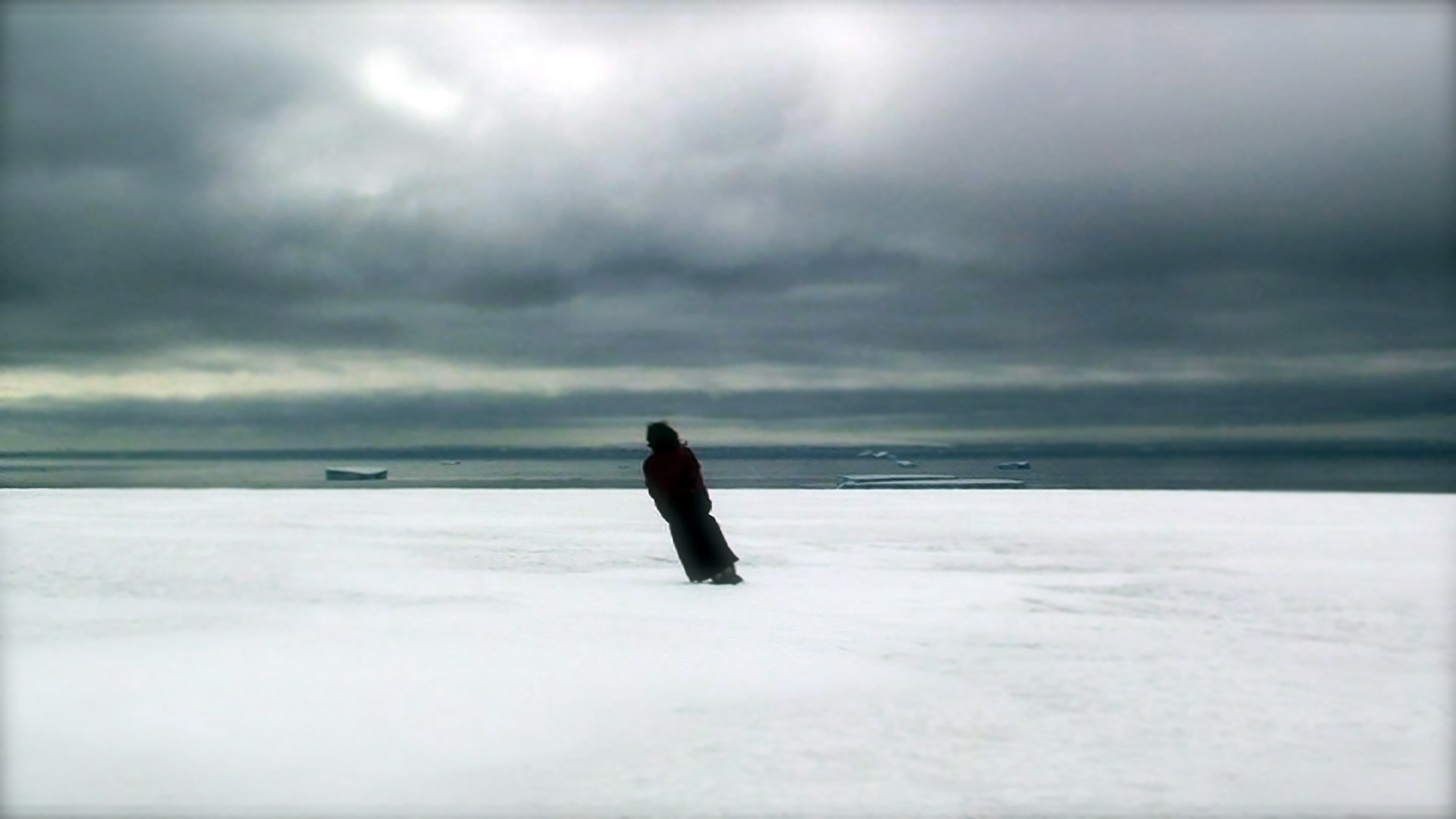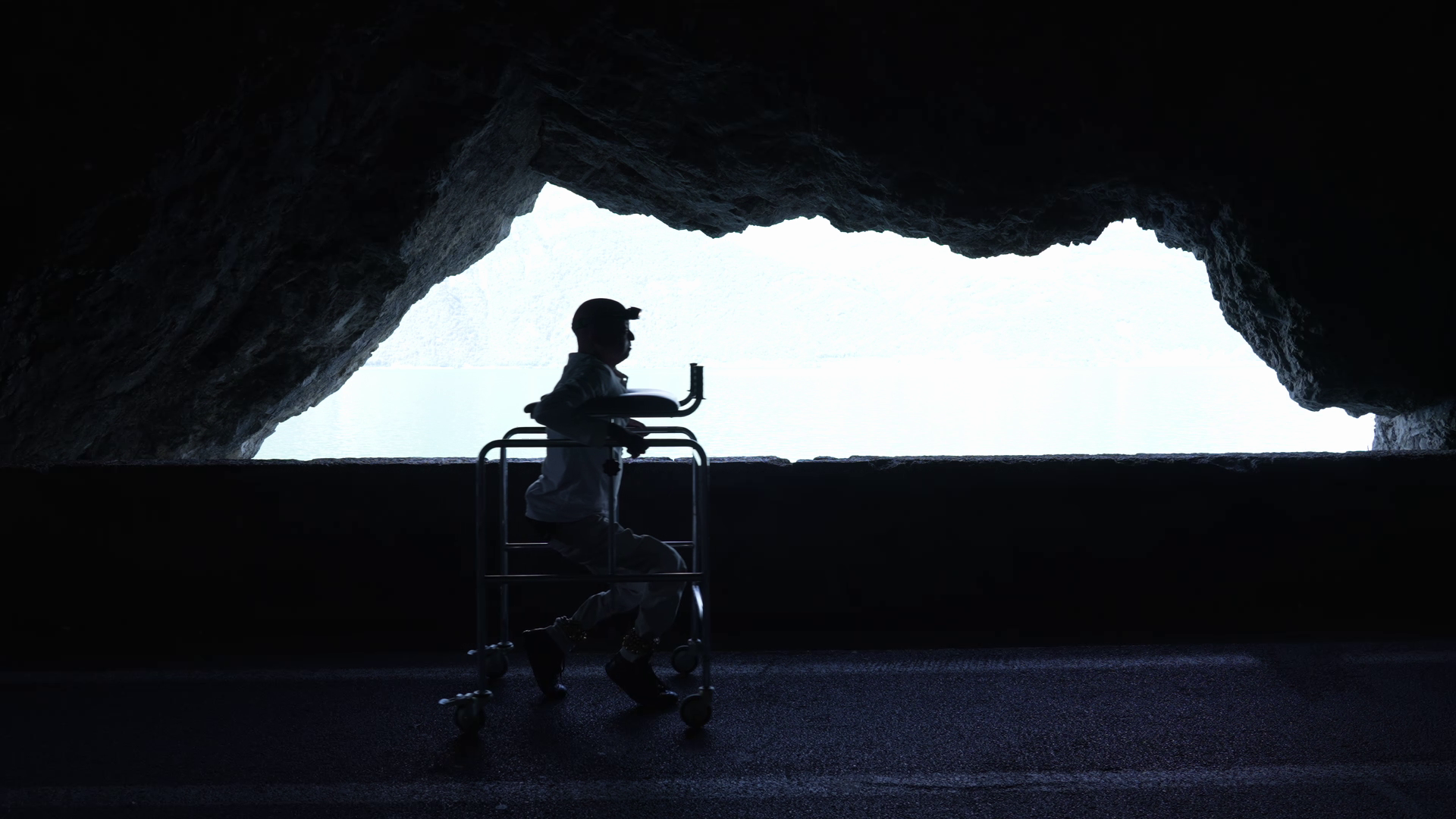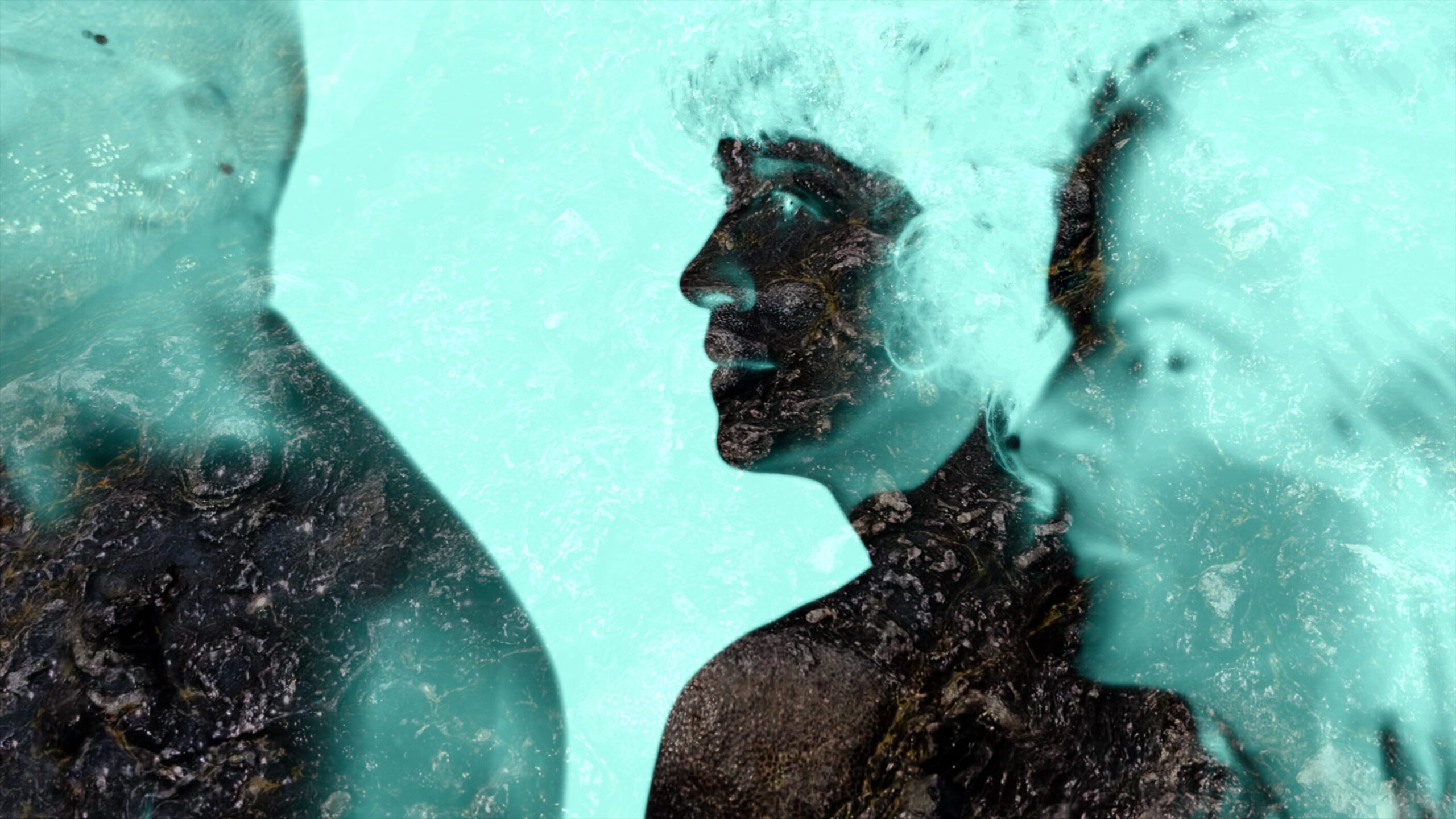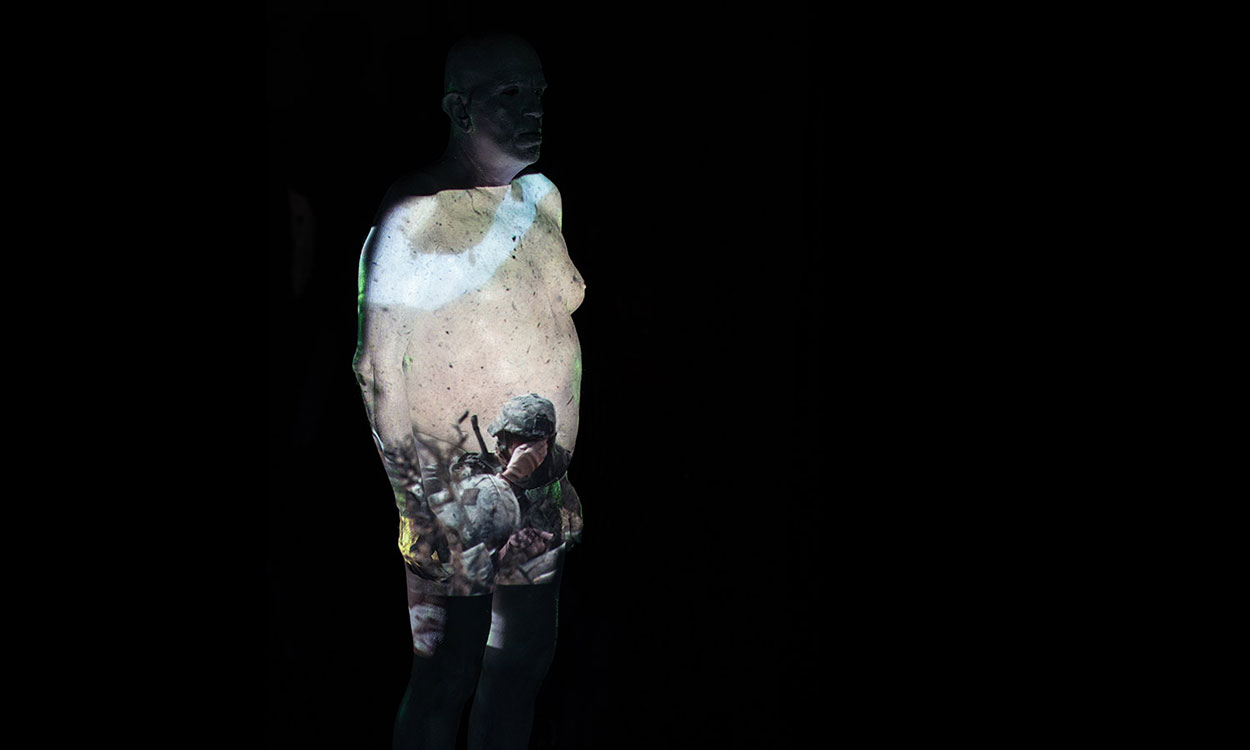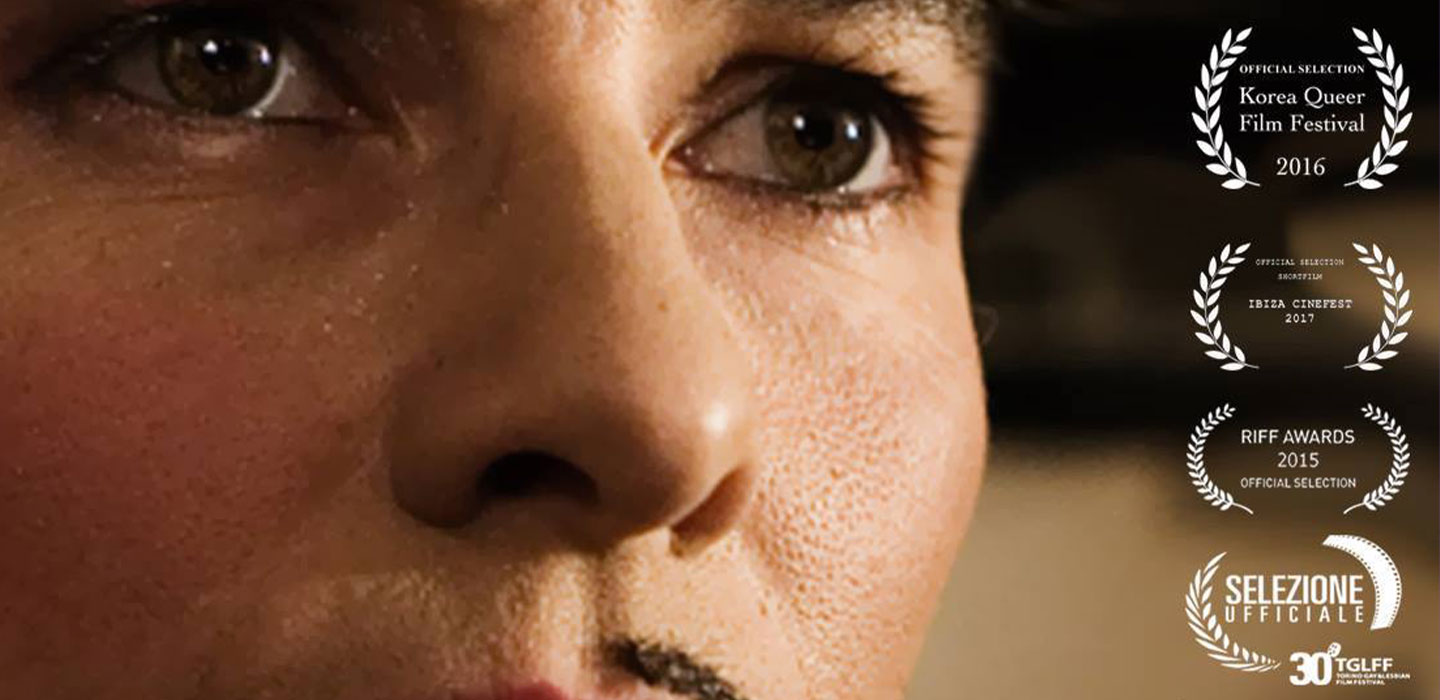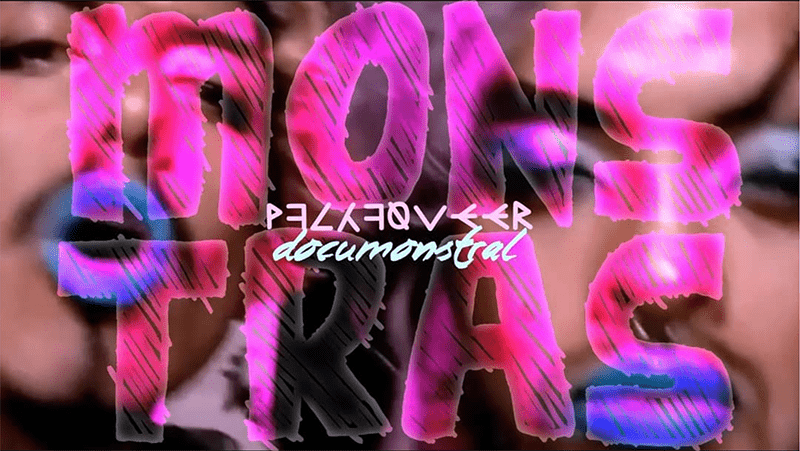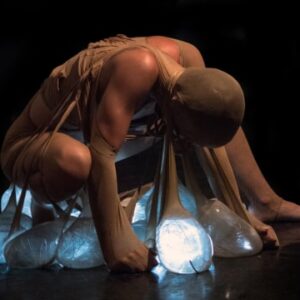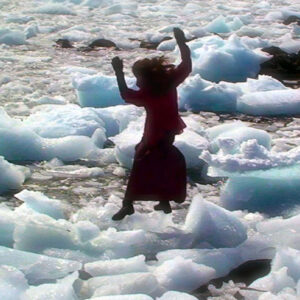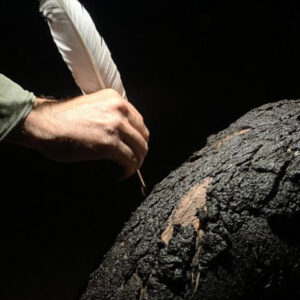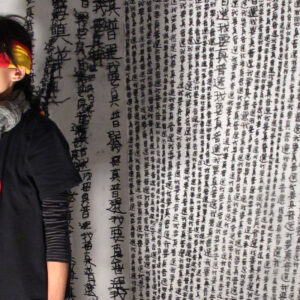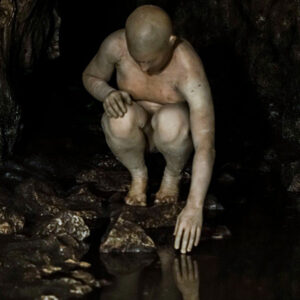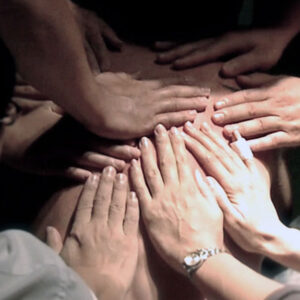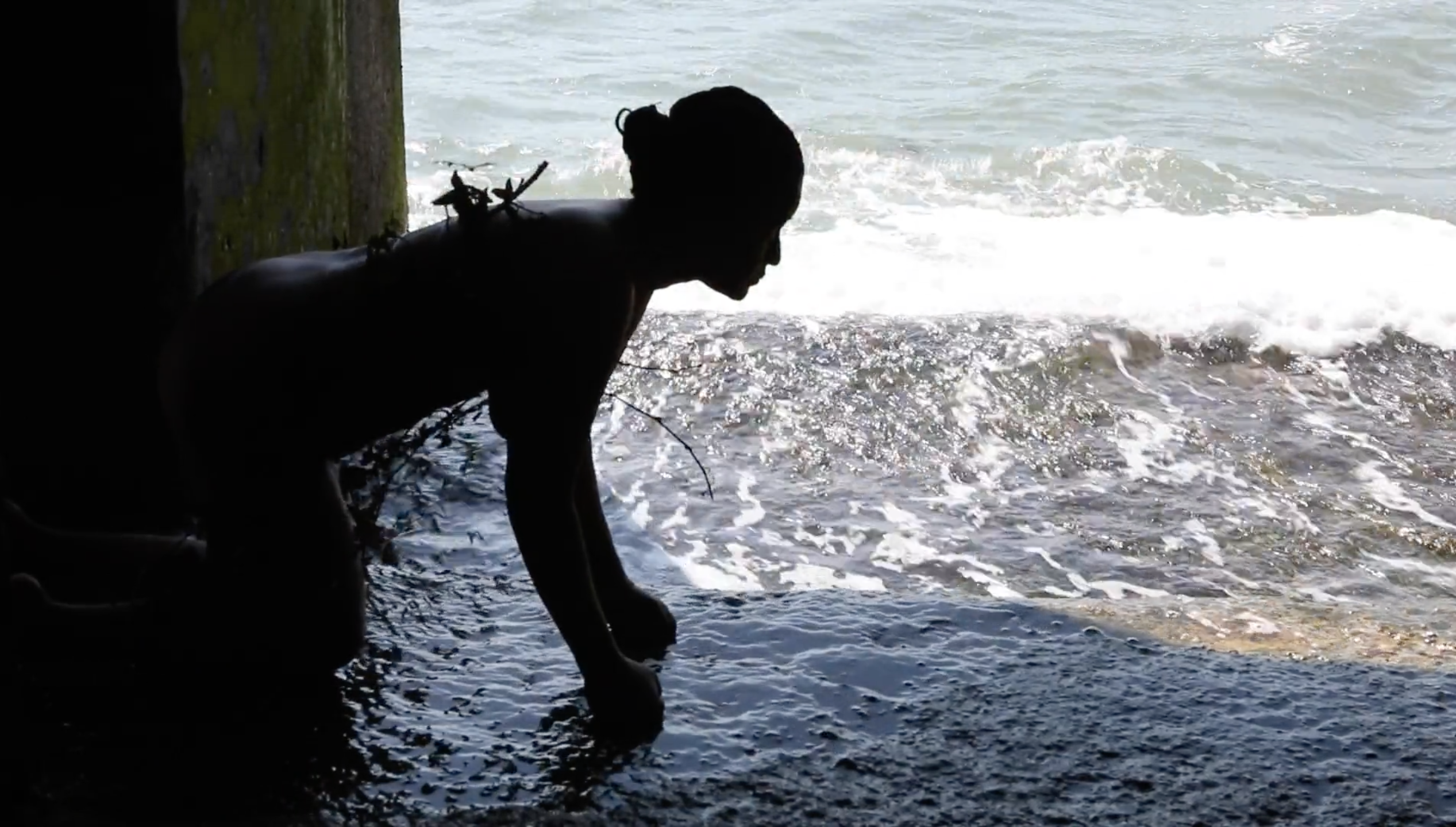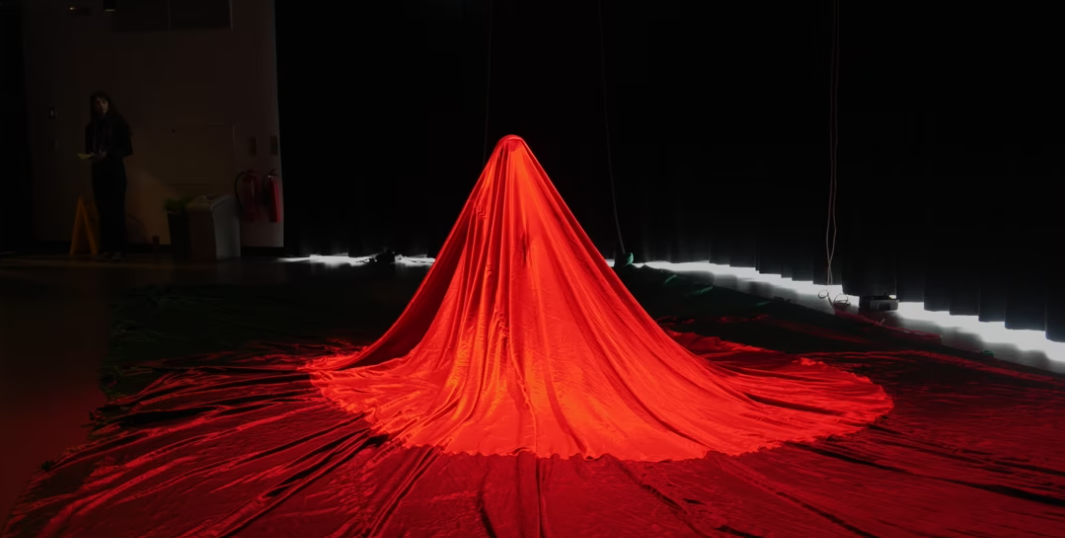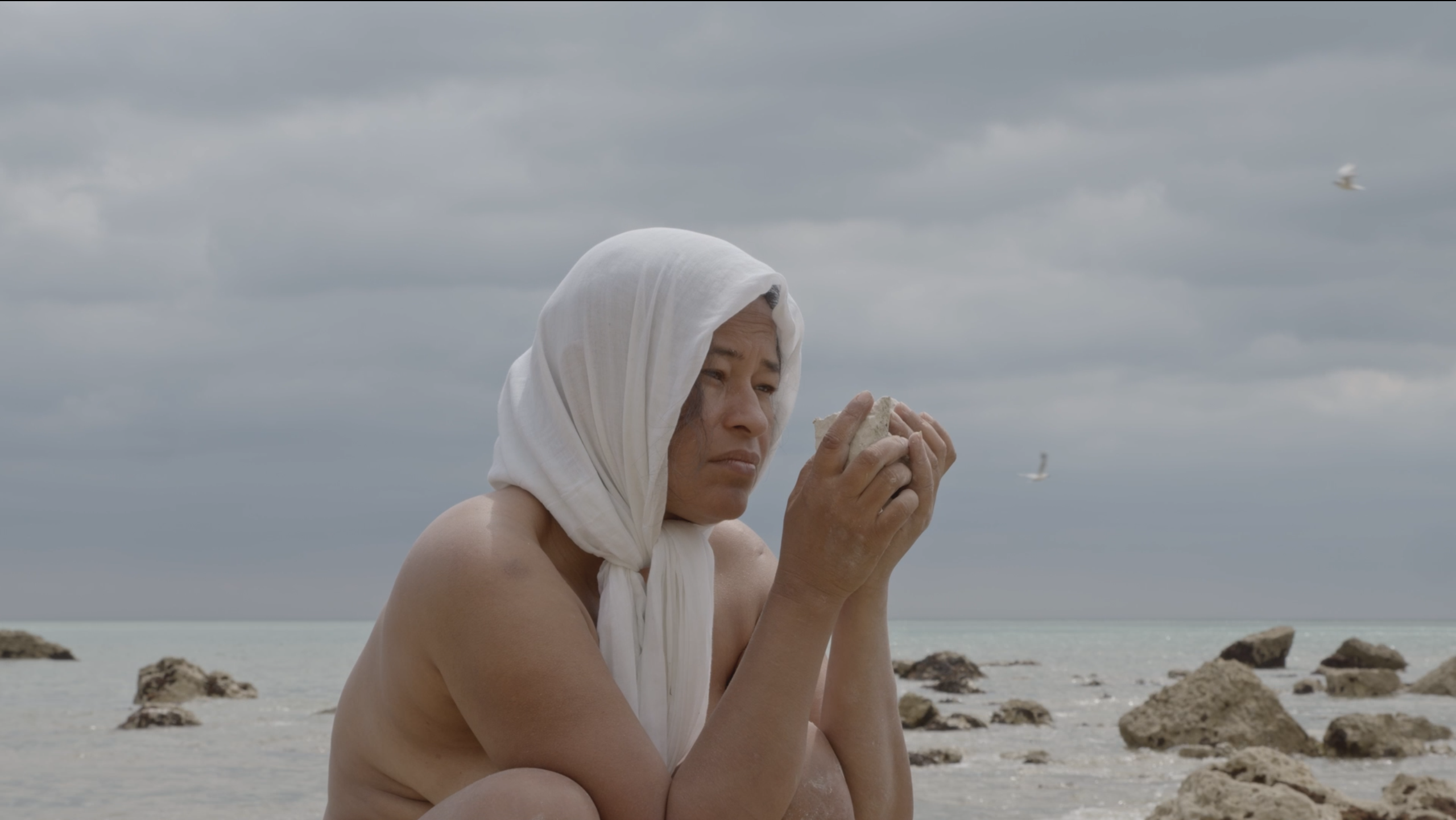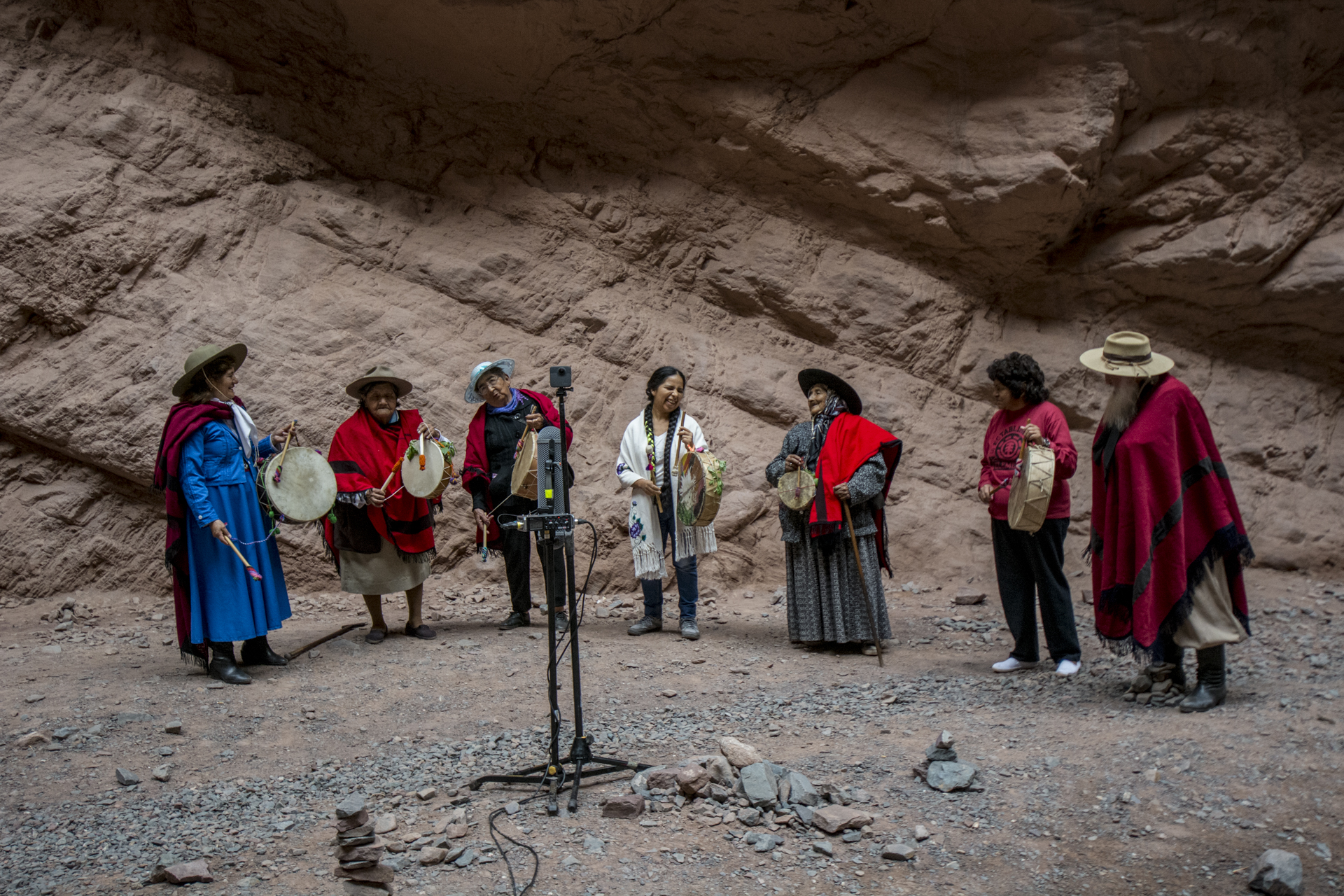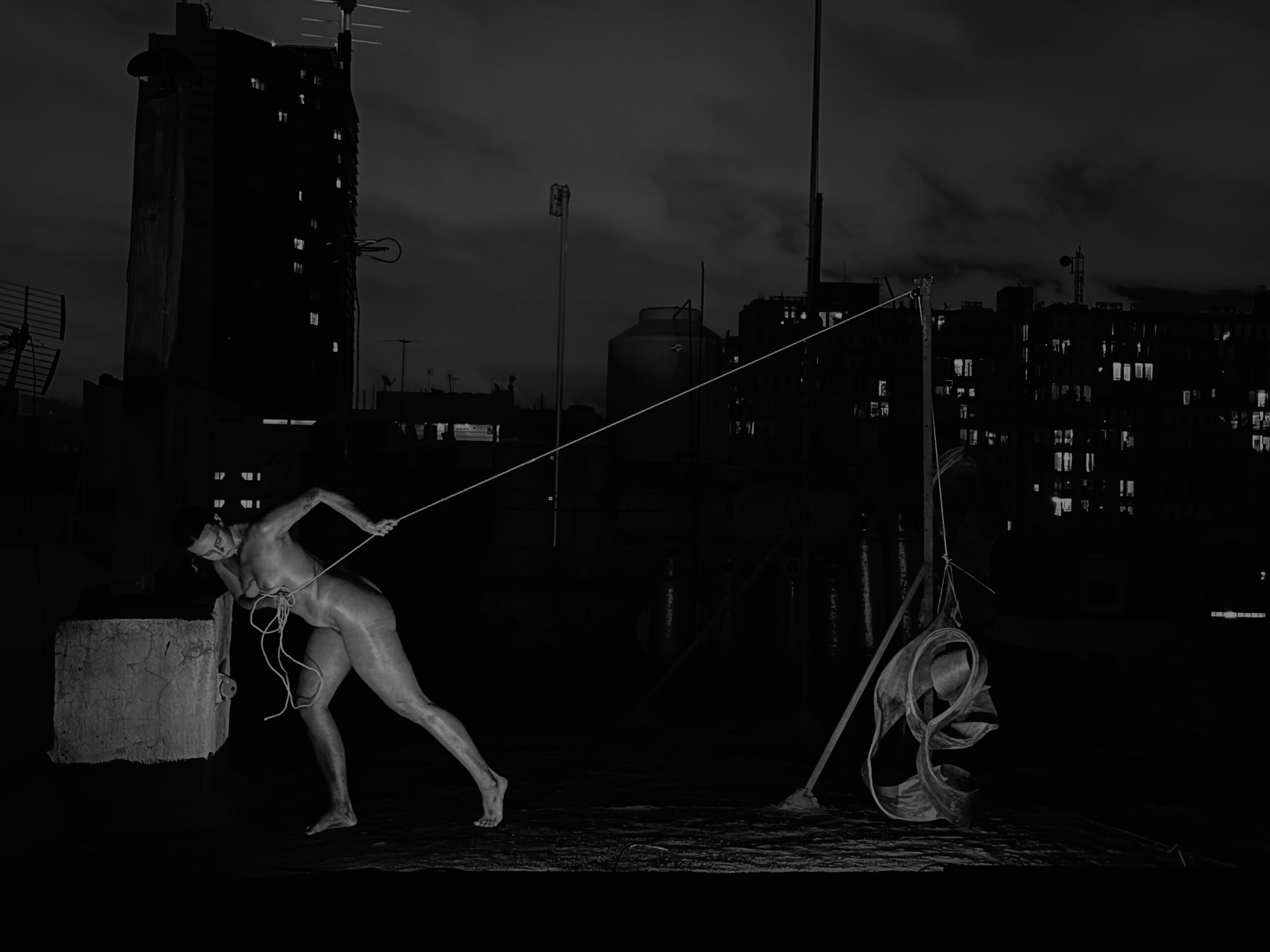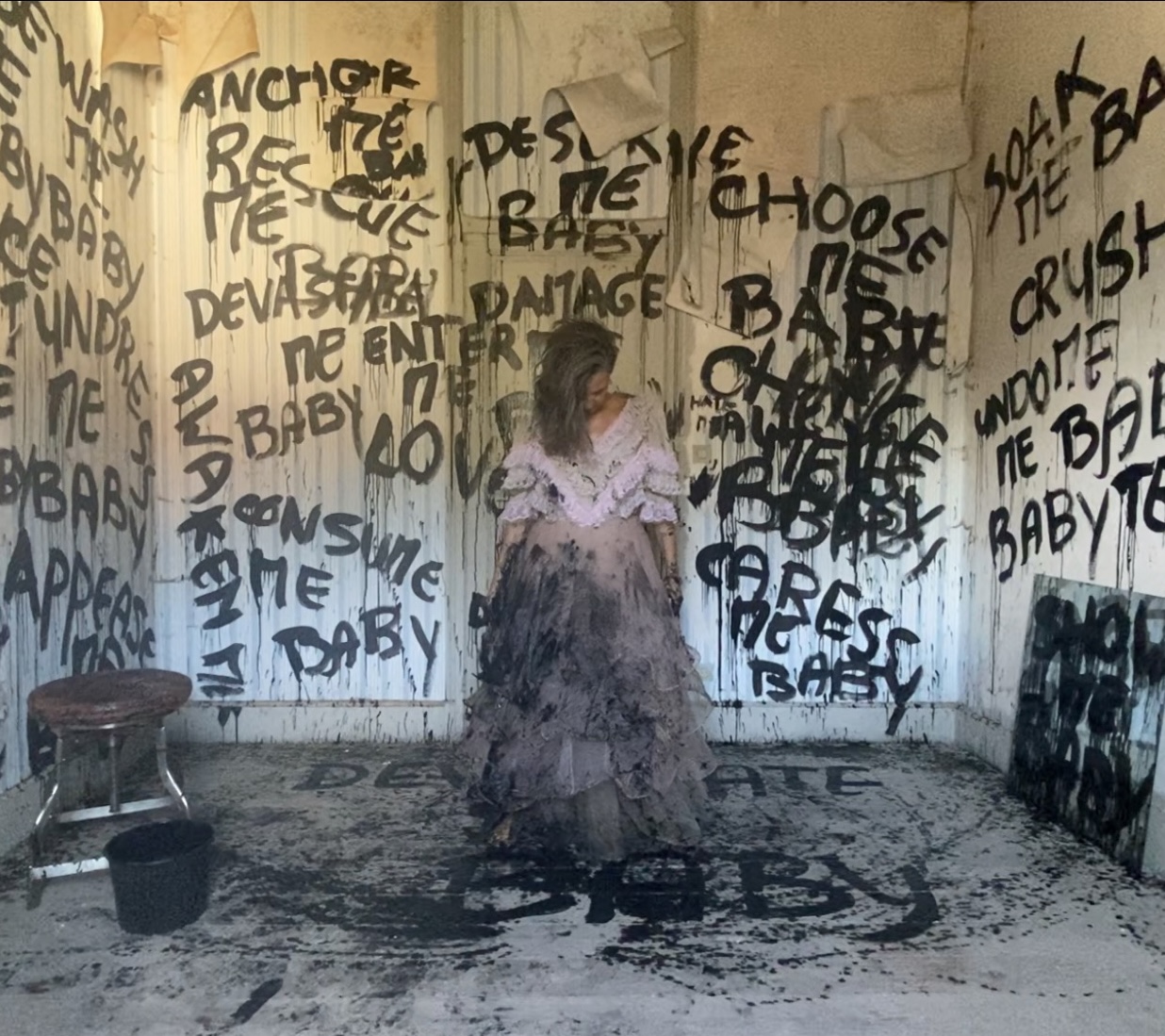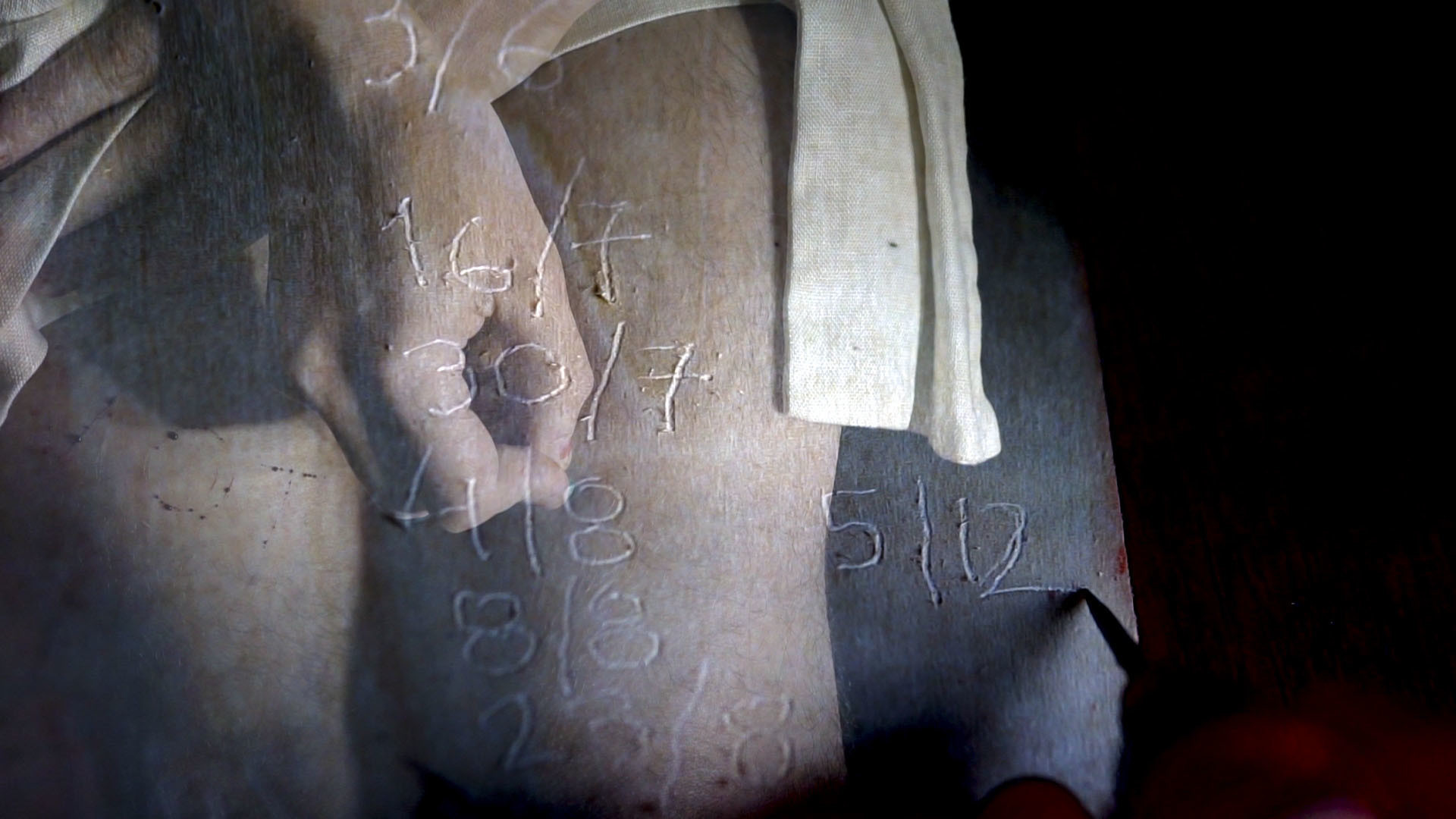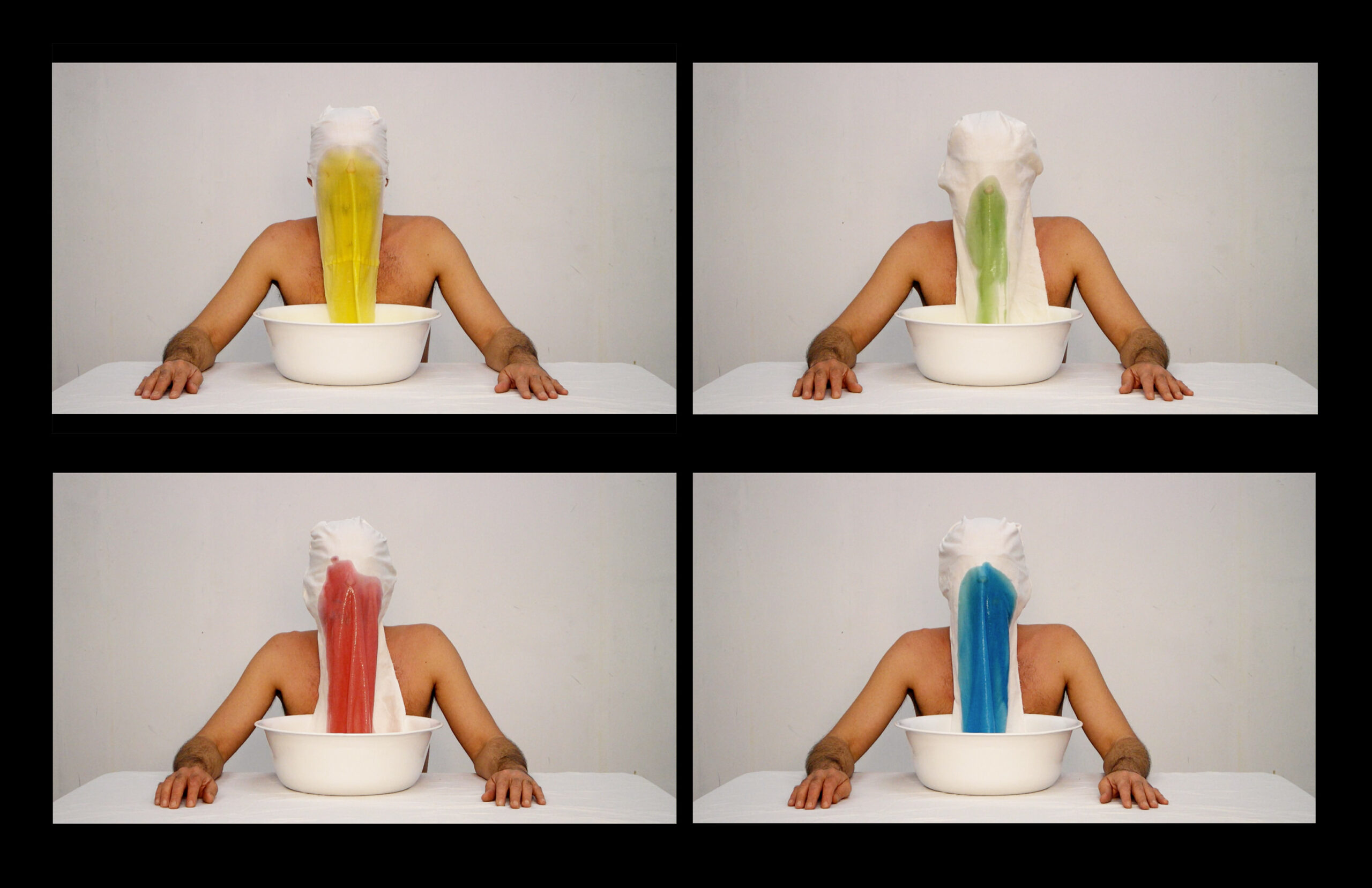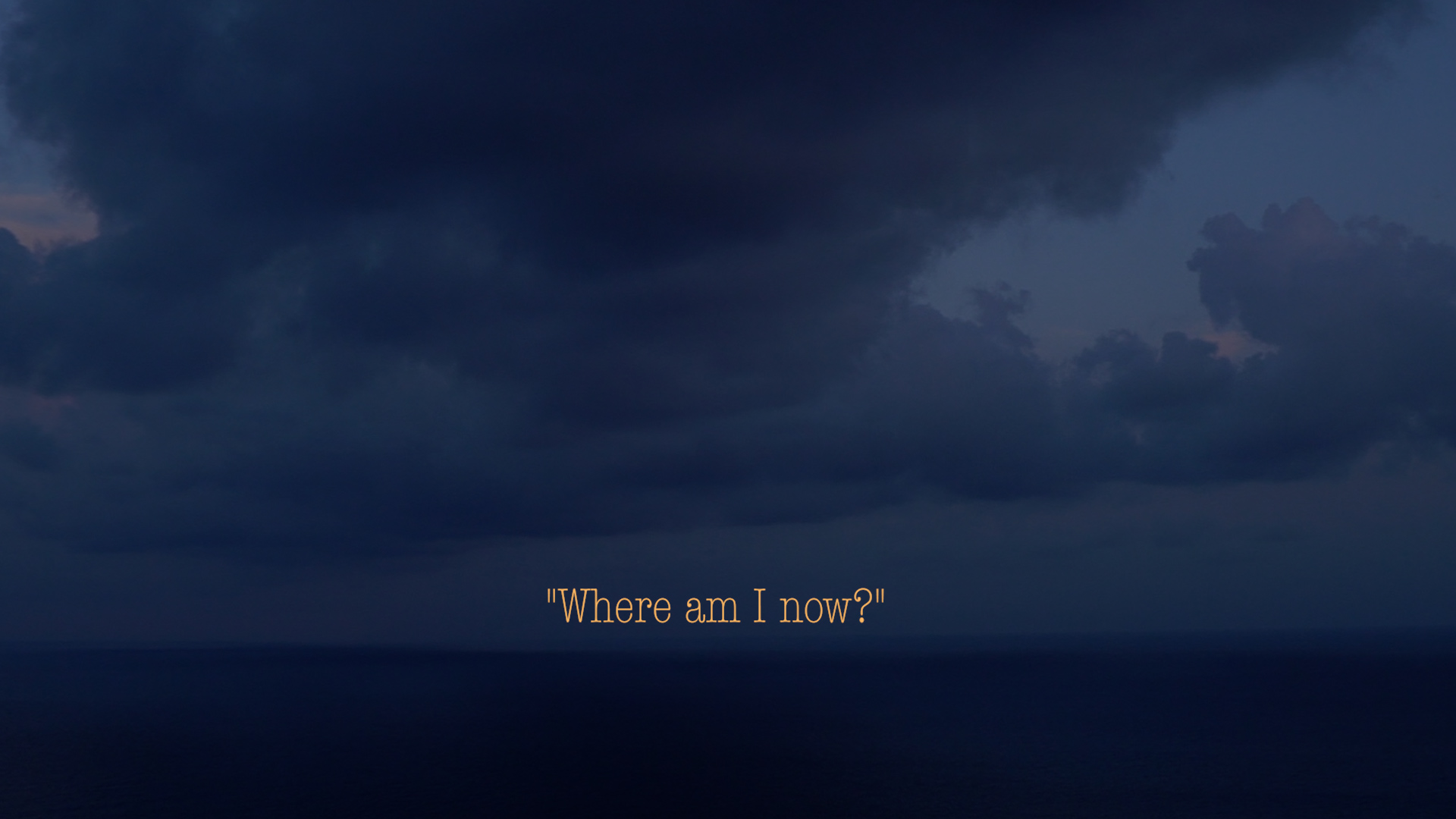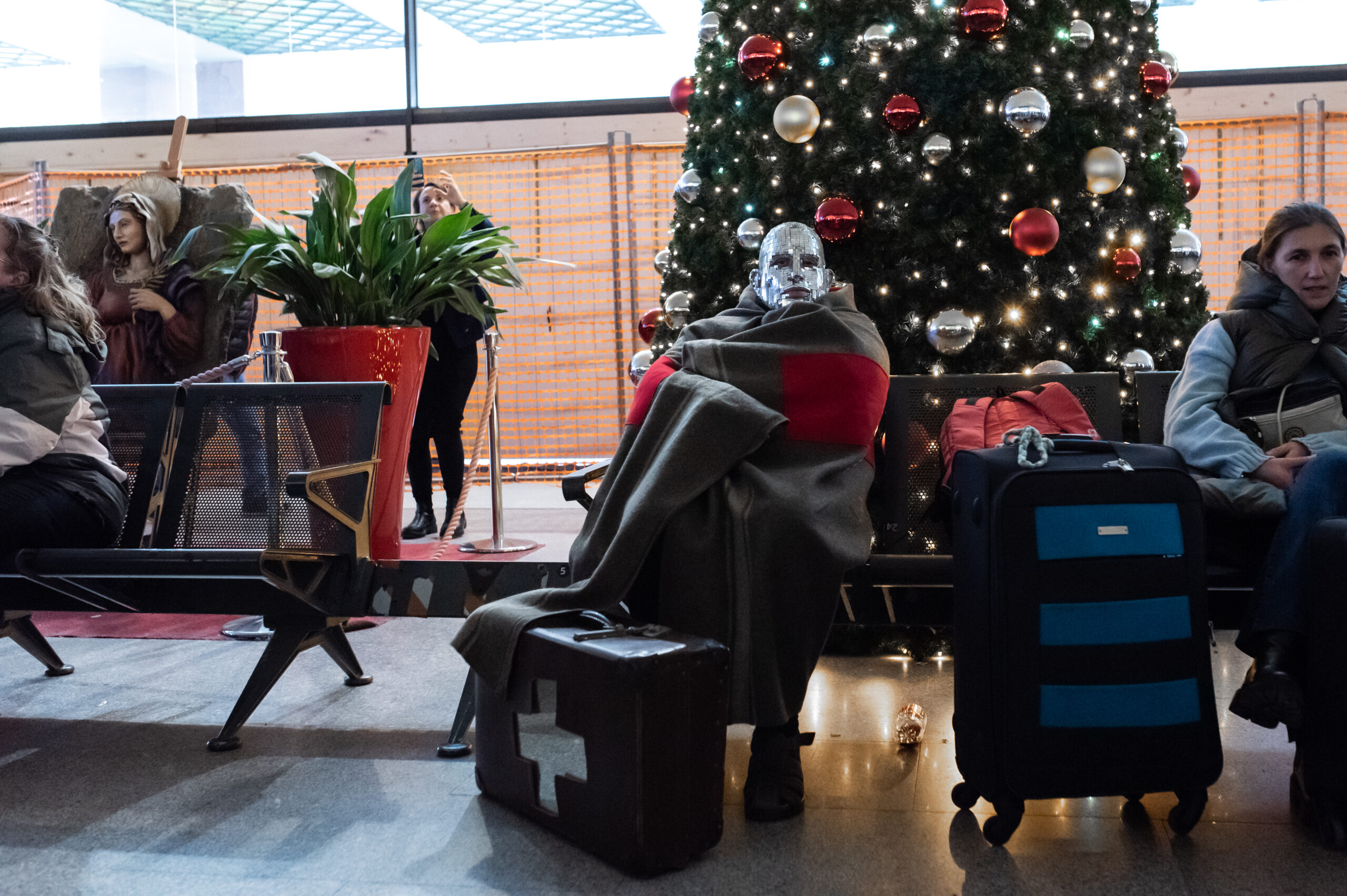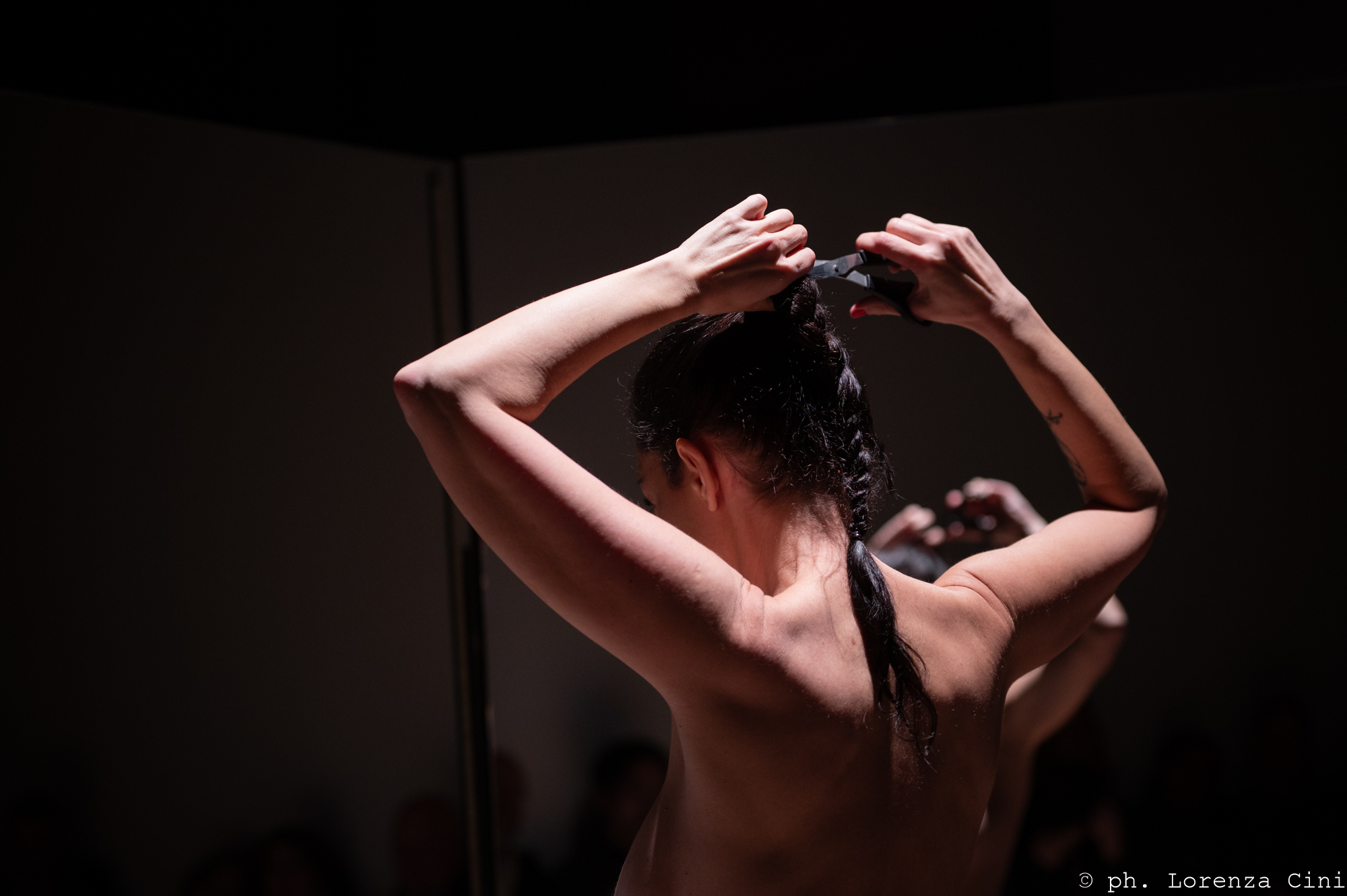Performance art video
Community
Artists first
Every time you watch a video, PAV enables you to support directly the artist
A platform to explore performance art On video
2010 VestAndPage inspired a new experimental and ecological performance-based film production method. Theirs are complexly layered film works that move in the realms of magic realism, through which they examine the evolution from original documentation of performative acts toward contextual, non-linear storytelling. Their films are produced on-site as direct and visceral performances, which are not rehearsed or staged and happen in response to extreme environments. Stenke and Pagnes usually work alone or with a small team of collaborators and use minimal non-invasive equipment. In a constant search through a reflexive mode for new images of interior landscapes, they consider the world the studio and host: they do not go to a place to tell a story – they go to a place to find its story. To perform in these thresholds where the visible blends with the invisible, they have developed a psychogeographical method to activate memory and uncover layers of information and imagery stored in the human body, psyche, spirit, and non-human environment. Since then, they have produced three feature-length films, a silent film, a trilogy of shorts, two shorts and numerous interview series and art videos. In 2020, they published “Poetics of Relations: Manifesto on Performance-Based Filmmaking”.
VestAndPage’s first film trilogy, “sin∞fin”, presents three medium-length art films of collaborative performances in epic locations worldwide. Teetering between the real and the visionary, these films feature the artists undertaking surreal and ephemeral acts. Amplified by the unfamiliar environments, the performances reflect on universal human experiences such as altruism, partnership and the transient nature of existence. Episode #1, “Performances at the End of the World,” set in Patagonia and Tierra del Fuego (2010), thematically focuses on the microcosm and intimate domain of the individual and the couple. Episode #2, “Performances at the Holy Centre,” located in Uttarakhand, Delhi & Kashmir (2011), highlights the topic of society and religion. The concluding episode, “Performances at the Core of the Looking-Glass,” filmed in Antarctica (2012), engages through narratives on nature and the universe with the macrocosm. The artists’ actions evolve in direct response to the surroundings in which they find themselves. The camera records what possible spectators would view, yet the movie is not a documentary. Instead, the works are pieced together organically, forming an autonomous story generated through the process of making it to be read by each viewer in a personal way.
An abandoned NATO base built during the Cold War on a mountain pass linking three valleys to each other in north Italy. Old business lines, passageways and other morphological peculiarities. Sound waves, cymbal vibrations and fake animal puppies mark an imaginary sense of the time passing. The landscapes around take on ascetic and fleeting colours. Those zones that were once controlled from now on are a way out. The senses conjugate an escape trajectory from the body to the sky. The video consists of three chapters. Each of them begins with a description of emotions.
The story develops through symbols concerning identity, presence, existence and condition. Documentary scenes alternate with anatomical frames. Keeping direction straight on, the protagonist discovers new territories—nowhere is everywhere.
He trespasses and tracks them down with his orthopaedic devices, migrating from a tunnel’s darkness to the light, like a miner who reaches the surface after spending endless moments in the depths of the earth where the rumble of metal makes its way through the rocks.
Becoming Fossil invites viewers to become time travelers through kaleidoscopic sensations of touch and elemental change. Join in and travel backward and forward in time around our small precious planet. Ride the waves of climate emergencies and experience both extinction and resiliency in human and more-than-human touches.
Using innovative body mapping techniques of a film made up of thousands of found images, Franko B revisits his seminal bloodletting works for the first time in his practice. Each cut challenging the audience to confront their own history, a global history of war, abandonment, homophobia, freedom, displacement, famine and sex.
In I’m Here, present but disembodied, Franko B provides a portrait of our failing society. As the artist bleeds for a world that is hemorrhaging to death, pain and nostalgia emit to expose how Franko B became who he is amongst all of the shit.
“Every day I’m trying to make sense of my extended time here. The past is part of our present. It never left us but is evolving rather than repeating; it is continuing to allow us to make the same mistakes. I believe this is valid for both the personal and the political. I’m Here is trying to express these two connected worlds. It doesn’t revisit the past romantically or melancholically in the context of our political and social histories but questions and reinterprets it.” – Franko B
A long time ago, there were three kinds of human beings: male, female and androgynous. As they were powerful and threatening to scale the heavens, Zeus devised to cut them into two ‘like a sorb-apple halved for pickling’ and even threatened to cut them into two again, so that they might hop on one leg. Ever since then human beings longed for their other half so much that once found they restore their ancient perfection. – Aristophanes in Plato’s “Symposium”.
Those who escaped the wrath of the Gods are not spared from the anxiety of research: Brutus at night, Julia at day, fragile and tenacious, reveals in front of the mirror that s/he does not know where this journey will take. Proud lesbian activist s/he’s one of the first Drag Kings in Italy.
In this documentary, the Pacha Queer movement, a dissident, rebel, counter-cultural, and “self-festive” community based in Quito, Ecuador, uses performance art to campaign for social, political, and sexual liberation. Monstras has been awarded as best film at Cine+Perfo 2022.
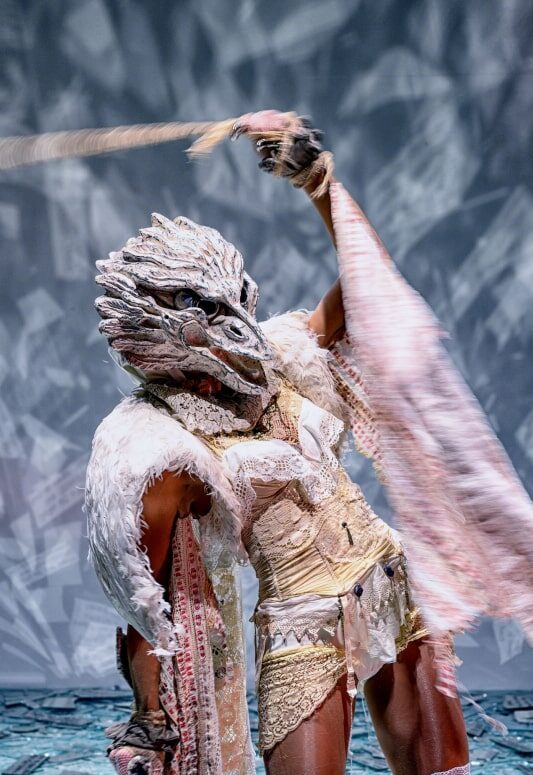
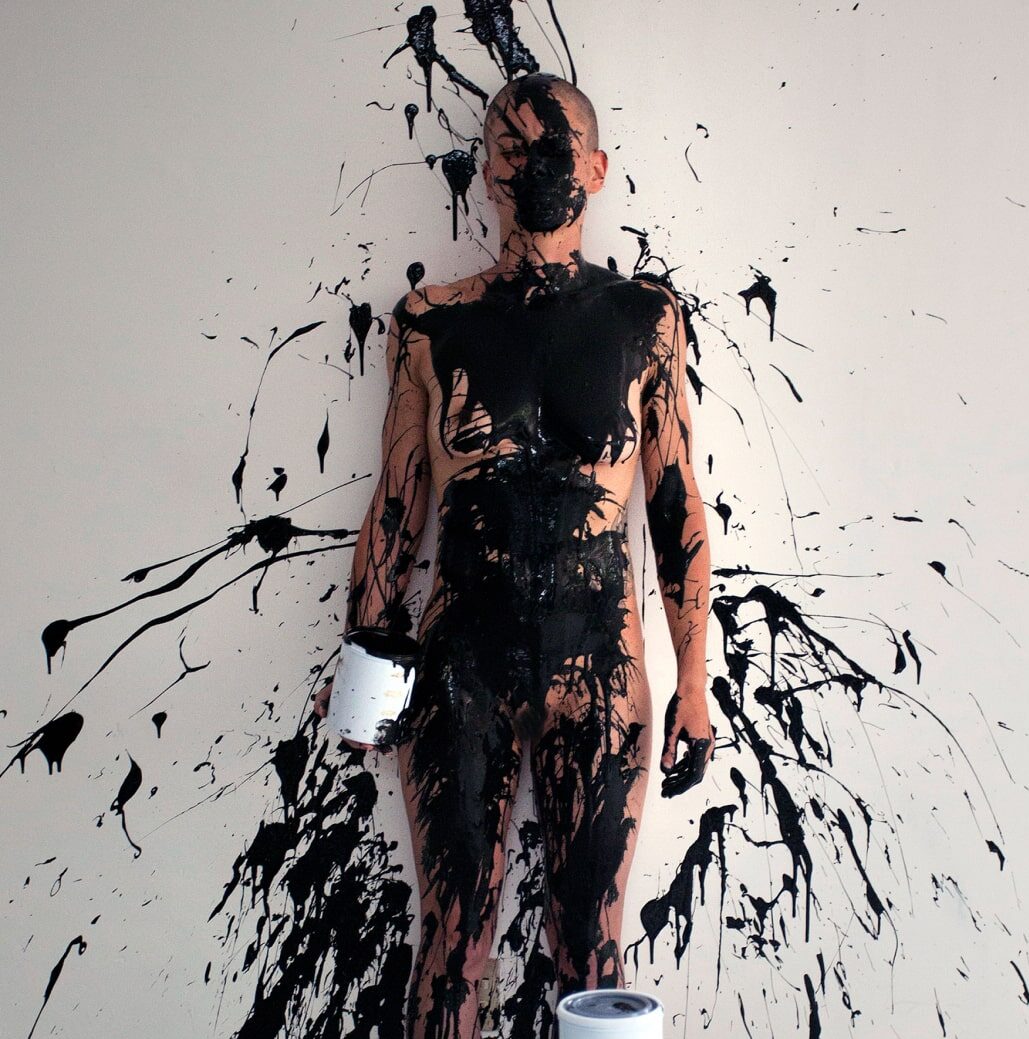
mission
PAV operates as a cultural community to host, foster and disseminate performance art videos to raise awareness and respond to contemporary emergencies.
Topics

CLIMATE EMERGENCY
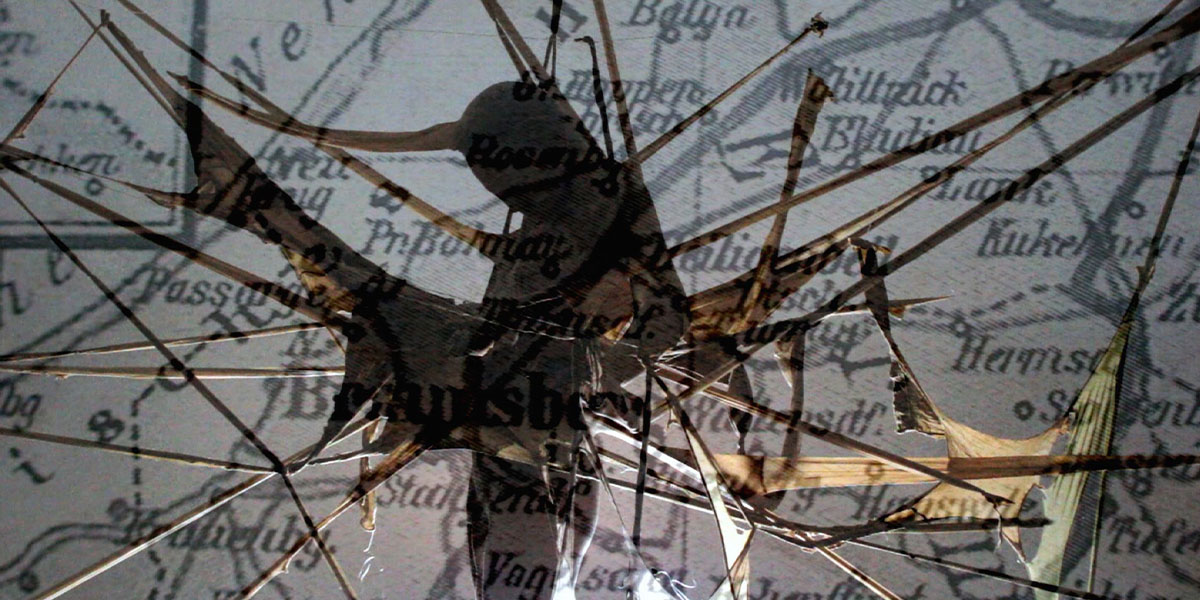
MIGRATION
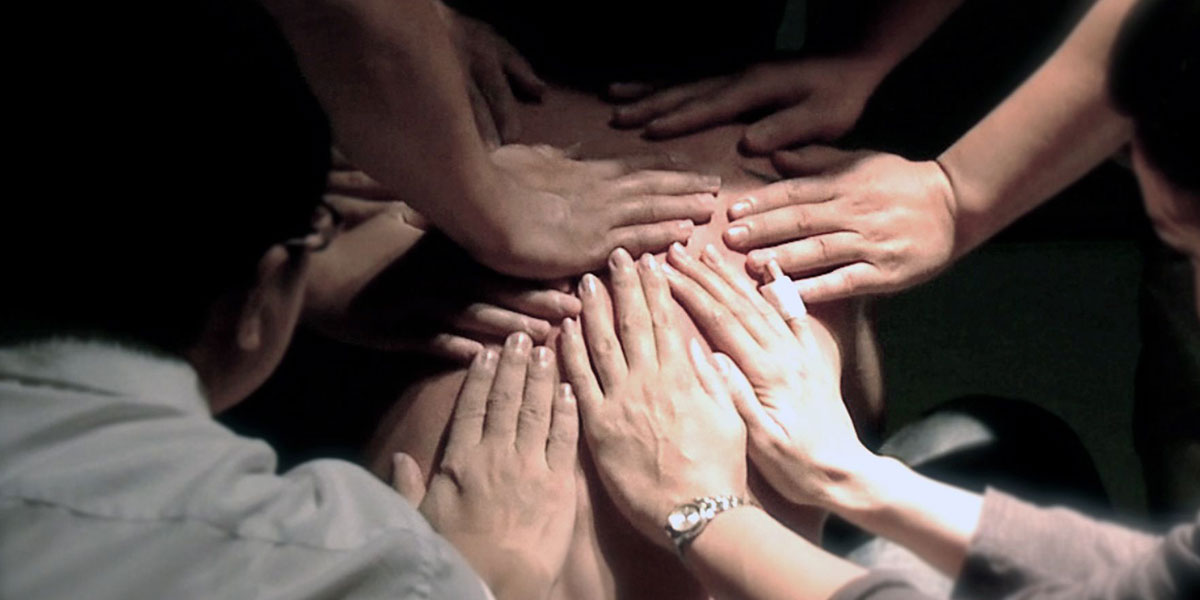
SOCIAL JUSTICE
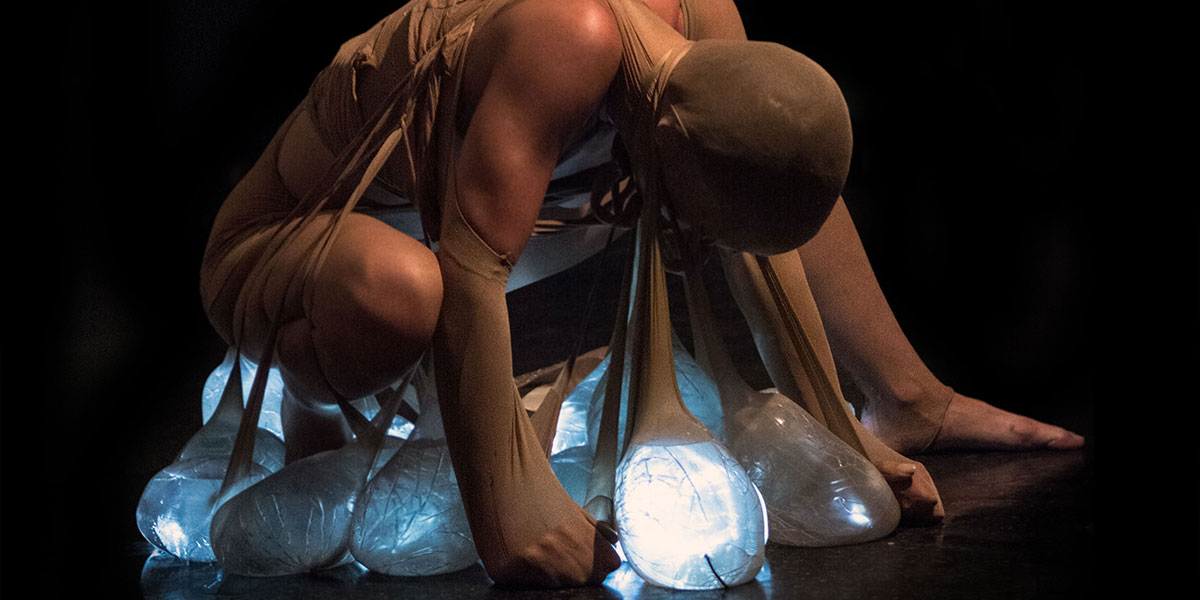
BODY TECHNOLOGY AND INNOVATION
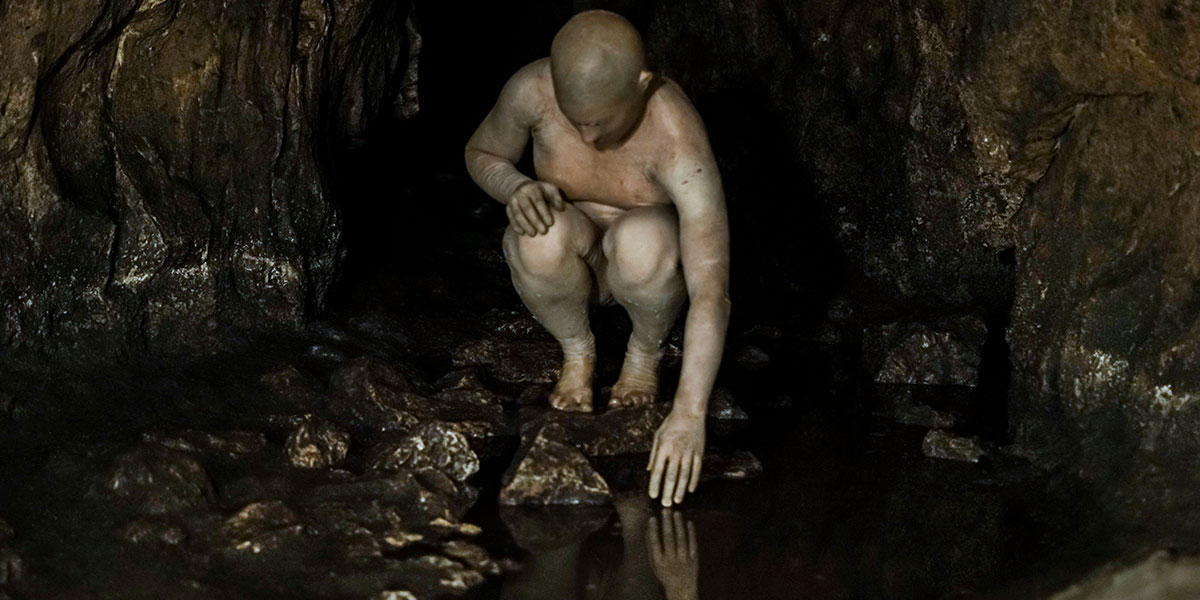
HUMAN RIGHTS
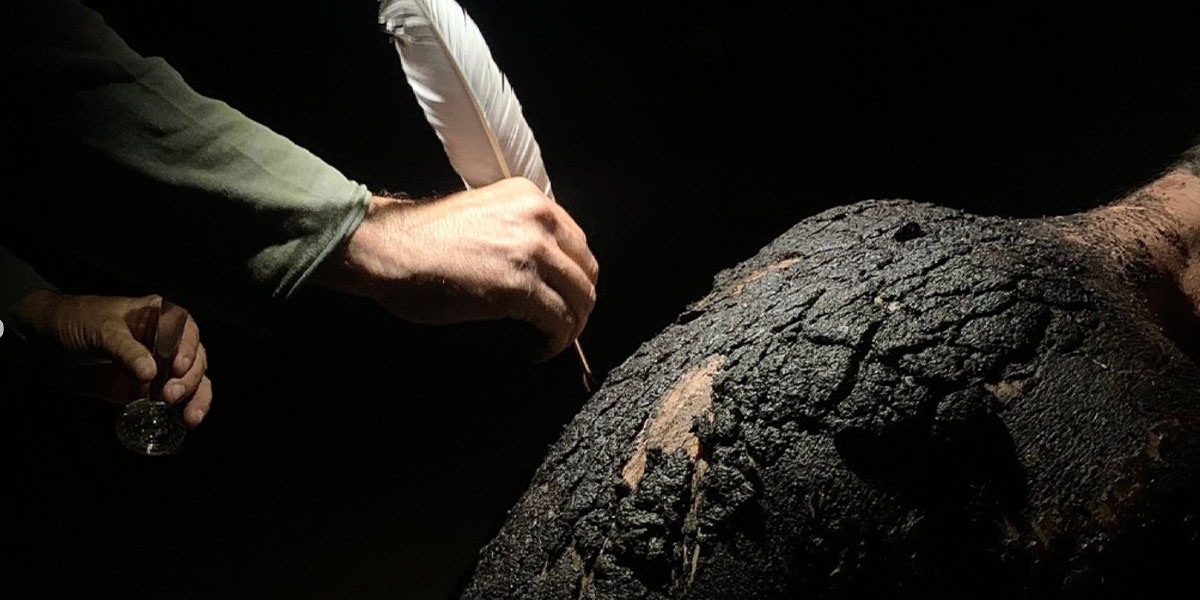
DECOLONISATION
Sustainable

Make cities and human settlements inclusive, safe, resilient and sustainable
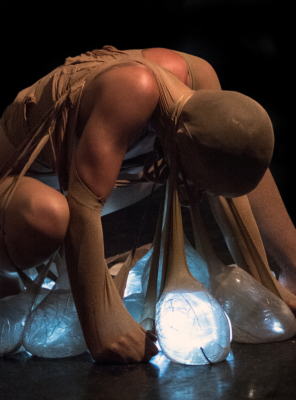

HIGHLIGHTS OF THE MONTH
A meditation on freedom, repression and hope.
When the ivy does not find its tower
When the delicate creeper does not find a strong wall…
Do we know how parasite plants can grow but not prosper?
I was told that a woman should never be insecure. That she should never be struggling financially, spiritually, emotionally, or rely on others.
A dead bird doesn’t necessarily portend a physical death, but a metaphorical one.
This dead bird marks the end of my search and struggle.
It is the end of something and the start of something else.
A poetic durational performance exploring personal experiences of chronic pain, displacement, and the endurance of prejudices as a woman who faced modern slavery.
Born in Bangladesh & having migrated to the UK about 20 years ago, the artist traces her journey of self-discovery & healing by grappling with her Bangladeshi heritage, cultural expectations, and the (metaphorical & physical) wounds that she carries in her body. The performance further explores Farida’s powerlessness in relation to the current political upheaval and the violence that her family & many others are currently experiencing in Bangladesh, with the rise of Islamic extremism.
A performance for camera that reflects on the artist’s feelings of rejection and social ostracism, in both her country of origin and the one she has been trying to settle to find safety and stability. In the UK, Farida has found that her search for equality would inevitably clash with the reality of racism and a climate of hostility towards migrants like her. From the coasts of Folkestone, just opposite the sharp white cliffs that face the turbulent waters of the English Channel, Farida is sitting on the ‘white’ rocks of an empty beach – her lone, naked, brown body staring towards an empty beach. There, she can finally scream – showing the aggression and vulnerability of a wounded animal.
NEW ON PAV
This is a report, registration, and promotion project of the acoustic and musical heritage of the Calchaquíes Valleys, particularly the Natural Amphitheater of the Quebrada del Río de las Conchas in Salta Province. Through diverse technologies, we aim to bring the local community closer to a broader audience.
The project consists of an interrelated series of individual works: An acoustic report in 3D audio, A series of musical and cultural manifestations presented in Virtual Reality (VR) and video installations, the realization of a documentary recording that captures the work carried out.
In collaboration with Mexican artist Jordi Hernandez’s timber sculpture, I engaged in a dialogue between human and sculpture. The rope, a sinewy umbilicus, orchestrated a balletic, co-dependent interplay between my body and the sculpture. Through various movements—static, slow, and fast—I created a bond with the wooden sculpture. As I moved, the sculpture responded in kind, embodying defiance against its innate inanimateness. This synergy unveiled a narrative of forms—a dialogue in which the organic curvature of my body melded with the angular stoicism of the wooden structure. I didn’t just coexist with the sculpture; I became an integral part of its existence, and it became mine, challenging the conventional demarcations between artist, object, and audience.
The performance resonated as a commentary on the human-environment continuum. In this interstice, the friction and tension symbolised the often overlooked yet intrinsic nexus between humans and nature. Corporeal emerged as a reflective mirror not just for myself—but also a contemplative vessel that implores us to reconceptualise our understanding of self in relation to our surroundings.
Created during the residency at Chateau d’Orquevaux in France, this video is inspired by Baudelaire’s masterpiece « Les fleurs du mal », a collection of ‘cursed poetry’, encapsulating the French Decadent movement.
Decadence, in the context of womanhood and feminism, holds relevance in its essence of refusal—an opposition to the norm. This manifests as a rejection of art historical ideologies (such as the use of craft), gendered norms, traditional feminine roles, and discourse around excessive consumption of food, alcohol, and drugs. Chantal purposefully embrace this ‘excess’ as a deliberate and liberating aesthetic, contemplating the obsessive, violent and addictive nature of desire.
In conclusion, decadence is far from obsolete; we live in undeniably ultra-decadent times. The performance navigates and challenges these decadent complexities, offering a contemplative lens on the refusal of societal norms and the liberation found in embracing excess.
PERFORMANCE FOR CAMERA
A performance for camera taking as a starting point the killings of women by their partners, during 2021 in Greece. Domestic (and other forms of) violence, inflicted predominantly on female-identified subjects around the globe, remains under-reported, stigmatised, and kept as taboo behind doors: devastatingly pervasive in capitalistic, patriarchal, hegemonic, and (hetero)normative societies. The performance whilst using specific signifiers and (symbolic) references focuses on skin self-writing and dancing as acts of resilience and (self)empowerment “THIS IS NOT YOUR TERRITORY” is not only a performance for the dead but mainly for the still alive ones, the daily survivors, including the children behind the closed doors, and their joint screams. There is not enough space for the names of all of them, but definitely, they are not forgotten.
A stray dog that has been given a name has a far greater chance of survival.— Hannah Arendt
The core themes of this performance for the camera are the problem of moral principles and the relationship of the body to citizenship from the perspective of Stoic philosophy. Stoicism (a school of Hellenistic philosophy that flourished in Ancient Greece) focuses on human nature as part of universal nature and cosmic sympathy: the sense that the universe is an indivisible living organism, always in flux. Concurrently, the video is accompanied by an evocative depiction of an individual’s distress, serving as a poignant reminder that rights are achieved through united efforts and resilience during periods of oppression, devastation, and lamentation. Pappas’s artistic endeavour seeks to capture the essence of existential unease within today’s civilization. By weaving together individual and collective human and non-human connections with concepts encompassing the body, citizenship, space, time, mysteries, and the opposition utopia/dystopia, Universal Rights i.e. Naked Statelessness, deploys the camera as a vehicle for testimony and documentation. It deciphers a contagious and symbolic discourse, functioning as a mechanism to challenge the prevailing inclination towards the uniformity of thought and behaviour.
“I’m here, inside me. I’m always moving. My home is myself.”
Everything rotates around the question: “Where are you now?” Those who ask this question may also look for coordinates for themselves. A silent voice moves along the moving images. Thoughts about being and belonging to oneself are juxtaposed over natural landscapes—nature itself. Movement is the constant that binds the bodies. There is a need to visualise the self and others geographically to acknowledge the tangible existence of things. The sea is the protagonist—water’s continuous flow, water as life and death, the element and place to start a journey, a part of a journey, a little fragment of life. Again.
DOCUMENTATION
“As always, I am not interested in just telling my story. I tap and share the story told and untold of our humanity, which I live through witnessing these present times—for I’m here, in this space, and not alone. This performance is a journey through personal and collective memories and history. The body and the artist’s body become a canvas, a sculpture, poetry, and a sound, too”
SOLA reflects on experiences of loneliness and isolation but also on solidarity and the hope that holds out against them.
The artist’s hair, growing since the beginning of the Covid-19 pandemic, becomes a symbol for the loss of physical contact that our lives became marked by. With the act of braiding being an act of sisterly companionship and consolidation, the artist has to execute it alone. What is more, in SOLA the hair becomes a marker of time, having grown through the numerous crises that marked the past years with the eruption of violence all over the globe and in particular against women.
Celebrating the 10th anniversary of the VENICE INTERNATIONAL PERFORMANCE ART WEEK, VestAndPage and the Anam Cara collective presented in December 2022 the performance opera UnderScars at Palazzo Mora, the historical premises of the European Cultural Centre in Venice.
UnderScars is a gathering of experienced artists and performers who challenge their practice to attempt novel perspectives on art and society. It is a collective work that gravitates around the themes of disability, severe diseases, addiction, patriarchy, capitalism, abuse and discrimination.
The wounds and stigma they cause are dealt with poetically through performance actions and artmaking rituals of kinship and togetherness.
On this occasion, Palazzo Mora’s main hall and six adjacent rooms transform into a dwelling site of interconnected performance installations, where temporary, intensive co-creation processes aim to reveal the qualities of existence.
The hosting space functions as a social-narrative incubator wherein performance methods are intertwined for coagulating inclusive and expansive life stories. The collaborative performance unfolds as it builds on sustained encounters of different artistic research combined with performative practices.
As the title suggests, the artists now gather to unveil precious experiences of vulnerabilities, hesitations, fragilities, hopes, the unspoken they carry under their cicatrices, and wounds healed by performing. Memories and experiential transformation processes entwine and collide to respond poetically to present emergencies.
UnderScars was envisioned and devised by the artist duos VestAndPage (Verena Stenke & Andrea Pagnes) and Marianna Andrigo & Aldo Aliprandi in collaboration with Irina Baldini, Sabrina Bellenzier, Giorgia de Santi, daz disley, Nicola Fornoni, Marisa Garreffa, Fenia Kotsopoulou, Ash McNaughton, Aisha Pagnes, Enok Ripley, Sara Simeoni, Mauro Sambo, Joseph Morgan Schofield, Marcel Sparmann and Emily Welther.

